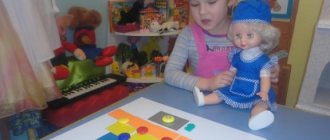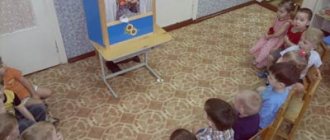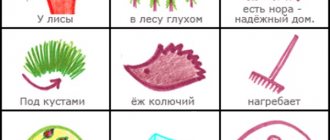Passive gymnastics (massage)
It is better if an experienced professional shows you the massage technique, but you can master the simplest techniques yourself.
The massage is performed with one hand, the other holds the massaged hand. Session duration: 3 – 5 minutes; carried out several times a day.
Massage includes the following types of movements:
- Stroking - performed in different directions;
- Rubbing - differs from stroking with a greater force of pressure (the hand does not slide over the skin, but moves it);
- Vibration - applying frequent blows with the tips of half-bent fingers;
- Massage using a special ball - with the ball you need to make movements in a spiral from the center of the palm to the tips of the fingers; practical advice: you need to use a hard ball, that is, it should not be easily deformed (then the impact will be maximum);
- Flexion-extension of the fingers - the fingers are initially clenched into a fist, each in turn is extended and massaged from the side of the palm in a circular motion from the base to the tip.
We talk more about massage here.
How to do finger gymnastics?
Babies can perform finger exercises directly after about a year. From this time you can start classes. To make them interesting, usually each game is accompanied by a certain rhythmic text - poems, nursery rhymes, fairy tales, which are “dramatized” with the help of fingers and palms. An adult must pronounce the words of the game rhythmically and expressively. This helps the child learn to formulate his speech correctly and beautifully. Children's imagination is actively involved in the game, and they do the exercises with pleasure.
The basic rules for such activities are as follows.
- An adult’s hands should not be cold (after all, games involve both demonstration of movements, as well as their correction and mutual participation).
- Before starting gymnastics, you need to do a general warm-up for your hands and fingers so that they warm up and become more pliable (just as it is important for an athlete to stretch the necessary muscles before a performance or match).
- During games, it is important to ensure that the child uses all fingers in the exercises.
- When carrying out such gymnastics, parents should not only monitor how the child performs the exercises, but also exert a tactile influence on the baby’s hands (stroking, tickling).
- Games should not be held in a forced manner, otherwise they will do more harm than good.
- The key to success is systematic training.
Advice
For children who can already make choices and have preferences, you can create a card index of games. Teach your child to look at the pictures on the cards so he can choose which exercises he wants to do that day. Follow his choice for several days. Try to somehow change those exercises that he systematically rejects: choose a more lively text, add emotions, change the picture on the card, dilute the game, for example, with rhythmic musical accompaniment.
If a child under 3 years of age has lost interest in finger gymnastics in an “ideal” form, you can switch him to another type of exercise - playing with objects:
- rolling round objects (plastic balls, balls, small fruits) across the table or floor;
- sorting cereals or small construction parts;
- pyramid assembly;
- building a tower from cubes;
- putting together a mosaic;
- painting with fingers (on flour, sand, cereals, scattered in a thin layer);
- examination by touch of materials with different textures (silk, fur, polyethylene, wood, metal, feathers, plastic, terry or woolen items, etc.).
From about 2 years old, you can transfer finger games with children to paper. You can roll it into balls or roll it into thin paper strips. Fingers work great if you ask the child to tear small pieces from a whole sheet. Let the child put the resulting scraps into a small glass.
Active gymnastics: games for developing speech using fine motor skills
Game aids:
- Butterflies made of colored paper
- Leaves of colored paper
- Pinwheel
- Cotton balls
- Paper boat
Games for children from 2 months:
- That's how different they are. Objects of various textures and shapes are placed in the child’s hand. The baby must grab the object and hold it for a while. This exercise develops not only motor skills, but also tactile sensations. It’s good if you comment on what is happening: “This ball is smooth,” “This hedgehog is prickly,” etc.
Games for children from 9 months:
- Prefabricated nesting dolls. First you need to collect one doll, then gradually complicate the game; after 2 years it should be a triple matryoshka.
- Pyramids. First you need to use a classic pyramid, the size of the rings of which decreases towards the top.
- Trace along the outline. You need to make cards with images of objects known to the baby, for example, a house, a tree, a car, and paste over their outlines with velvet paper. The essence of the game: an adult guides the baby’s finger along the contour and names the object. Then the outline is covered with beads or peas and the game is repeated.
- Cups and spoons. The child uses a spoon to pour sugar or semolina from one cup to another. You can also transfer beans, peas or nuts by hand.
- Modeling from plasticine. You need to start with a cylinder, and over time complicate the tasks: a ball, a carrot, a snake.
During the games, do not forget to comment on your actions and explain to your child everything that you do.
Games for children from 1 year:
- Strong palms. The child squeezes rubber toys. The best thing is the rubber hedgehog: the needles act like a massager.
- Mosaic. First you need to lay out simple shapes: paths, flowers, squares, and then move on to more complex ones: houses, cars, Christmas trees.
- Constructor. The size of the parts and the complexity of the design depend on the age of the baby: you need to start with the largest parts and the simplest structures, for example, building a turret.
- Beads. The size of the beads also depends on the age of the child. First, instead of beads, you can use balls from pyramids with round parts and string them on a thick cord; then the size of the parts must be gradually reduced, moving on to real beads. For the exercise, medium-sized beads already strung are used. The goal is to teach the child to lay out the outlines of objects from beads. For example, you can lay out a circle, square, heart, spiral, etc.
- Laces. Since lacing has different contents, it makes sense to play with the lacing process - for example, ask the child to sew a dress for his mother (lace-button) or lace shoes (lace-boot).
- Magic tray. Sprinkle a thin layer of semolina onto a tray and run the child’s finger over the cereal. The child is then shown how to draw various shapes. At the age of 2 - 3 years, you can draw numbers and letters.
- Multi-colored clothespins. The essence of the game is to teach the child to independently attach clothespins, and to make the game interesting, you can do this according to a thematic principle: rays to the sun, needles to the hedgehog, rain to the cloud, grass to the ground. Of course, for this you first have to make preparations. This is a rather difficult task for a child. Don't try to achieve results right away. To begin, take the baby’s hands in yours and do the exercise with him.
- Cinderella. You need to mix white and red beans and ask your child to sort them by color.
- Funny pictures. Spread the plasticine evenly over a sheet of cardboard and show your child how to lay out drawings using peas.
- Counting sticks. Show your child how to use counting sticks to lay out different shapes. It is advisable that the counting sticks are not smooth, but ribbed: this serves as an additional massage for the fingers.
- Little sculptor. Dough modeling (dough recipe: 1 cup flour, 1/2 cup salt, a little water). The advantage of dough over plasticine in this case is that the crafts can subsequently be used as toys.
- Fasten the button. You will need two pieces of thick fabric. On one of them, sew three buttons of different diameters, in the second, cut loops of appropriate size. First, show your child how to fasten the buttons, commenting on your actions: “We insert the large button into the large buttonhole, the medium button into the middle one, and the small button into the small one.” Then take the child's hands in yours and repeat the exercise. After this, you can invite the baby to try to fasten the buttons on his own. Don’t insist if the baby doesn’t want to or if he can’t do it. This is a very difficult exercise and requires practice to perform successfully.
- Stencils. It is recommended to start with stencils for internal tracing (it is easier for a child to trace inside than outside) and with the simplest shapes (circle or square). Practical advice: you can buy ready-made stencils, but it is better to make them yourself. The fact is that most standard stencils are small in thickness, and it is inconvenient for a child to trace them, since the pencil keeps slipping off. Therefore, the stencils must be quite voluminous. A good solution is to cut them out of a piece of linoleum or a shoebox.
MAGAZINE Preschooler.RF
“Finger gymnastics as a means of speech development for preschool children”Bolotova Natalya Viktorovna Teacher-speech therapist of the highest qualification category MBDOU "Kindergarten of compensatory type No. 17" Sergiev Posad municipal district Moscow region, Sergiev Posad,
annotation
This article examines the relevance and usefulness of finger games as a means of speech development during correctional and educational work in preschool institutions. The purpose, tasks of finger gymnastics, and the rules for its implementation are described. Examples of finger games for classes with children, “tied” to the study of lexical topics for the 1st period of study (September-November) are given.
Topic: “Finger gymnastics as a means of speech development for preschool children”
The popularity of finger games has increased significantly. Such games are not a newfangled hobby for modern parents. They have existed among different peoples since ancient times. And no wonder, because finger games are a wonderful way to cheer up a child, distract him from something, and find contact with any child.
The development of the motor side of speech depends not only on the functional capabilities of the facial-articulatory muscles directly involved in the implementation of speech acts; The development of a child’s speech is also indirectly related to the state of his general motor skills, i.e. motor activity in general.
Previously, it was believed that the main thing on which speech development depends is the degree of verbal communication between children and surrounding adults. However, research by scientists has shown that the degree of verbal communication with adults does not play as big a role as expected. They also studied the relationship between a child's speech ability and his motor functions. Studying the anatomical relationships of the child’s body, scientists, neuropathologists and defectologists came to the conclusion that the child’s speech ability depends not only on the training of the articular apparatus, but also on the movements of the fingers. The hand can be classified as a speech apparatus, and the motor projection area of the hand can be classified as
Finger gymnastics as a means of speech development
FINGER GYMNASTICS AS A MEANS OF SPEECH DEVELOPMENT
Rakhmetova Sabira Sagyngalievna
Speech is an integral part of character and defines personality in the broadest way. Nowadays, more than ever before, speech is the main means by which people live together and collaborate on local, national and even international scales.
A child's language development cannot be separated from his motor development. The entire history of human development proves that hand movements are closely related to speech. The first form of communication of primitive people was gestures. Researchers such as L.A. Wenger, L.S. Vygotsky, J. Piaget, and many others proved that sensorimotor development forms the foundation of mental development. Typically, a child who has a high level of development of fine motor skills can reason logically and has fairly developed speech.
Fine motor skills exercises improve the child’s memory and mental abilities. All body movements and speech motor skills have common mechanisms, so the development of fine motor skills of the hands has a beneficial effect on the development of a child’s speech.
Finger gymnastics is necessary for children from a very early age, as a powerful stimulus for speech development, and one of the options for the joyful, warm, physical emotional development of a child.
Motor skills are the entire sphere of motor functions of the body, combining their biomechanical, physiological and psychological aspects. One of the indicators of a child’s good physical and neuropsychic development is the development of his arm, hand, manual skills, or, as is commonly called, fine finger motor skills.
Eastern doctors claimed that fingers are endowed with a large number of receptors that send impulses to the human central nervous system. There are many acupuncture points on the hands. Among other motor functions, movements of the fingers of the hands are of particular importance, since they have a huge impact on the development of the child’s higher nervous activity.
Since ancient times, the development of movements of the hands and fingers without objects in children of early and early preschool age has been given great importance in folk pedagogy, because the development of fine motor skills was included in a variety of labor processes, and children from an early age were prepared to perform them. For this purpose, children were offered various finger games with nursery rhymes as preparatory exercises.
Simple hand movements remove tension from the hands and relieve mental fatigue. They can improve the pronunciation of many sounds, and therefore develop the child’s speech. The development of fine movements of the fingers precedes the appearance of syllable articulation.
In folk pedagogy, games have been created based on the development of hand movements: “Ladushki”, “White-sided Magpie”, “Horned Goat”, “Guess by touch”, “What is the object made of?”, “Wonderful bag”, etc. Their meaning is still significant today not sufficiently understood by adults. Many adults see them as entertaining rather than as developing, healing influences.
To develop fine motor skills in preschool institutions, the following can be used: lacing; fastenings; mosaic; beads, buttons of different colors and sizes; small stones, shells for sorting; laying out.
Analysis of various manuals for the development of fine motor skills made it possible to systematize games aimed at developing fine motor skills, which can be included in finger gymnastics for children:
1) games of manipulation;
2) finger exercises in combination with sound gymnastics;
3) finger exercises;
4) finger exercises in combination with self-massage of the hands and fingers;
5) theater in hand, allows you to increase your overall tone, develops attention and memory, relieves psycho-emotional stress.
Finger gymnastics can be included in the daily routine. Finger and palm games are necessary for children from a very early age. They become both a powerful stimulus for speech development and one of the options for joyful, warm, bodily emotional development. These games grow with the baby. It all starts with nursery rhymes, during which the child is passive, the teacher or mother herself plays with his hand, bending and unbending his fingers, tickling his palm. Then the child’s role gradually becomes active: the mother or teacher only pronounces the words of the nursery rhyme, and the child’s fingers move independently. Even later, the child becomes the arbiter of the game, both words and movements - everything is subject to him.
Thus, by performing various exercises with his fingers, the child achieves good development of fine motor skills of the hands, which has a beneficial effect on the development of speech, and prepares the child for drawing and writing. This gymnastics is very emotional, exciting and promotes the development of speech and creative activity. Therefore, finger exercises are the most important factor stimulating a child’s speech development.






